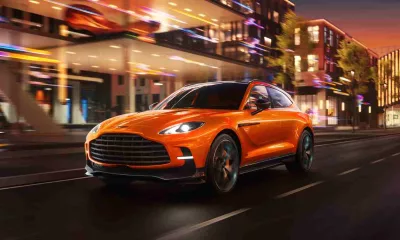By Gareth Dean
To me, all cars carry an association; Honda Civics remind me of a bovine-related collision I had on an English country road one night, Toyota Hi-Aces have a fist-shaking, expletive-riddled association of being cut up in traffic and Proton… well, I learned to drive in an old Persona Compact with a dodgy gearbox – enough said! Would the Proton Satria Neo be able to undo those memories of smoking clutch plates and bashed alloys?
At R134 995, the Satria Neo sits in the same price bracket as similarly engined offerings from Ford and Renault. It is on the specifications front where Proton hopes to get the edge on the competition; ABS with EBD, climate control, airbags, rear parking distance sensors, MP3 compatible CD player with Bluetooth capability, electric windows and mirrors are among the standard features of the car, the only optional extra thus far being leather upholstery at R4 999.
A rather vocal 1,6-litre mpi DOHC engine, which generates 82 kW, powers the Satria Neo from 0-100km/h in a claimed 11,56 secs on the way to a 190km/h top speed. This unit is mated with a five-speed manual gearbox with a notchy feel to downward shifts – oh dear, those driving lesson memories have re-emerged!
Where there’s Proton, there is often a lot of Lotus namedropping with regards to driving dynamics. It’s no Elise, the Satria handles tidily with direct steering, a compliant ride and little body roll in spirited cornering. The only real criticism of the driving experience is the tall gearing ratio that means the merest hint of hill necessitates dropping a cog or two to maintain momentum. Proton representatives at the media launch were aware of this problem and told the journalists that it intended to shorten the gear ratios on production models.
Proton admits that European tastes have influenced the Satria Neo’s styling inside and out. Having been haunted by images of very boxy early 90’s Protons, the styling of the Satria Neo demonstrates that the company is palpably moving in the right direction with regards to aesthetics.
It is not an imposing-looking vehicle, but it is neatly styled; the steeply raked roofline, roof-mounted spoiler and flared wheel arches that neatly accommodate the neat (standard) alloys lend an air of sportiness to the Satria. Considering the mixture of boxiness and anonymity that constituted previous Protons, the Satria Neo’s exterior comprises brave curves and scalloped front and rear lights and the result is a car most won’t mind being seen in.
The interior is an eclectic mixture of Euro-influenced styling cues that, when combined, should look a mess… but they don’t. The dash sports a wealth of open expanses (à la Renault), a neat centre section (with a slight teutonic feel, except for the Gen-2 stacked ventilation controls) and an Alfa/Renault-esque twin-hooded instrument binnacle. A brave effort was made to lift this interior above the norm with details such as the “allen-screws” in the steering wheel boss and gearbox surround, a grab-handle styled handbrake and Volvo-influenced speedball gearstick. The plastics are better than that of previous generations of Proton, but still not up to the standards of European rivals. It all feels well screwed together though.
The driving position is low-slung and it’s fairly easy to get comfortable behind the wheel. You do feel somewhat cocooned by the low roofline and high doorsills and it’s difficult to determine whether these are hangovers of a car designed to fit a Malaysian driver. The hatch reveals a practical enough load space but rear passengers will find their accommodation rather cramped.
Overall, the Satria Neo is a brave attempt to inject some adventurous styling and generous specification into a highly competitive market segment. Furthermore it did not bring back any driving lesson flashbacks, which can only be a good thing!














